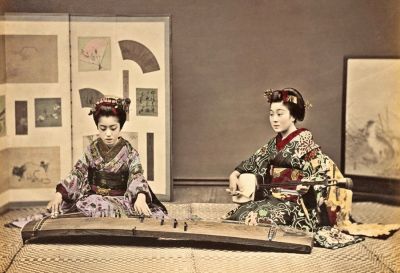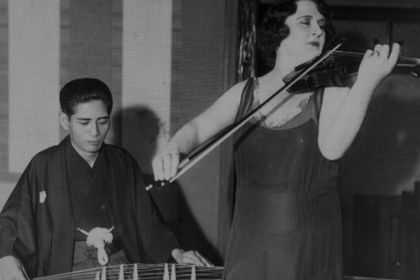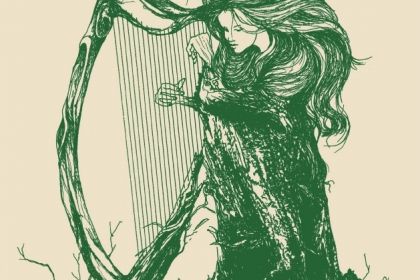Koto
First compositions for koto presented out of court by Yatsuhashi Kengyō in the 17th century

Women playing the koto and shamisen, ca. 1880s
Music Period: Baroque
Country: Japan
Genre: Folk
Piece of Music: Rokudan no Shirabe (六段の調), Midare Rinzetsu (乱輪舌)
Yatsuhashi Kengyō was a 17th-century Japanese composer who created a new concept of koto music, introducing the instrument of gagaku court orchestra to the general public. For many centuries before him, the harp-like koto had a very specific role in the rigid musical hierarchy of Japan which allowed only ceremonial works to be performed on the instrument.
Originally a skilled musician in the Japanese lute-like shamisen, Yatsuhashi Kengyō adapted some pentatonic scales of shamisen for koto, setting the stage for the latter to be widely used as both a solo and accompanying instrument.
Yatsuhashi Kengyō was a blind musician, in itself a common occurrence in the musical tradition of Japan and China: on the one hand, blind people had a special sense of musical space, on the other hand, it was an efficient way to solve the problem of employment for people with this particular disability. The title Kengyō in his name means the highest social ranking available to members of the Tōdōza—a Japanese guild for blind men established in the 14th century.
Listen to Michio Miyagi perform Rokudan no Shirabe by Kengyo Yatsuhashi:
Among Yatsuhashi Kengyō's works for koto, the most significant and popular is Rokudan no Shirabe (six-column tune) which is also considered to be the oldest piece written for the instrument. Originally composed for chamber music ensemble in which koto played a leading part, Rokudan no Shirabe is now mainly performed with solo koto; it also takes the central position of every musician's repertoire.
Midare Rinzetsu is another popular composition of Yatsuhashi Kengyō which is now performed not only on koto but also other traditional Japanese instruments such as shakuhachi flute.
Listen to Reiko Kimura perform Midare Rinzetsu by Yatsuhashi Kengyō:



